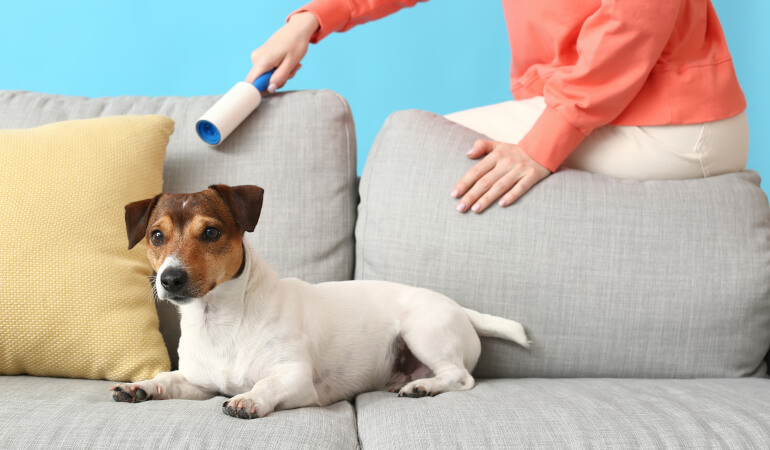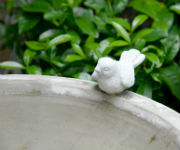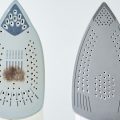
Tired of constantly being covered in dog hair every time you sit on your sofa? Or frustrated with the need to vacuum your furniture several times a week to keep it fur-free? You’re not alone. We understand your struggle and we’re here to help, so keep reading and you will learn some practical tips on how to effectively protect your sofa from your dog even when you are not at home.
Table of Contents
How to protect your sofa from your dog
Below you will find 10 different approaches you can try to keep your furry friend away from the sofa. We hope you will find the one that works for your dog and your specific situation. Let’s begin with…
1. Dogproof your sofa by keeping it covered
A straightforward yet highly effective approach to keep your couch protected from your dog is to cover it with slipcovers, blankets, or other suitable items that can fully drape over your chairs or sofa.
This will not only keep your upholstered furniture free of fur but also safeguard the material. If you allow your dog to sit on the furniture, it is advisable to wash the covers regularly to avoid mustiness and excessive accumulation of fur that can penetrate the furniture over time. Therefore, choosing machine-washable covers or blankets is the best way to go.
2. Keep pet toys near your sofa
One of the most effective ideas to deter your dogs from biting your sofa legs or scratching the material is to provide them with toys such as chew toys or scratching posts. This will not only help them relax but also redirect their attention away from your furniture.
There is a wide variety of toys available in the stores, and it’s essential to find the right ones for your pet. It’s advisable to observe your pet’s behaviour to determine whether it enjoys biting or scratching, before making a purchase. This will help you choose an appropriate toy for your companion.
3. Trim your dog’s nails regularly
Trimming your pet’s nails is not only beneficial for their health but also an effective way to protect your sofa. Overgrown nails can cause significant damage to your sofa’s fabric, resulting in costly repairs.
Keeping your pet’s nails trimmed and polished can also prevent the discomfort and pain caused by chipped or broken nails. Long nails can make standing and moving uncomfortable or awkward for your furry friend. In some extreme cases, the nails could even grow and embed themselves in the paws of your pet’s feet.
4. Teach your dog to get off the sofa
Teaching your dog to get off your furniture is a crucial step in protecting your couch or other furniture. With a bit of patience and effort, you can train your furry friend to obey the ‘off’ command.
Here are four simple steps on how to stop your dog from jumping on your sofa:
- You need to wait until your dog is on your furniture before you do anything.
- Place one of their favourite treats on the ground so they can see it.
- As your dog gets down, firmly say ‘off’ while making a sweeping gesture.
- As soon as your dog gets down, praise him and reward him with a treat.
With consistent training, your dog will learn to obey the ‘off’ command, preventing them from jumping on your sofa or other furniture in the future. Find more specific advice on dog training here.
5. Invest in a nice and comfy dog bed
Teaching your pet to use their designated bed can prevent them from damaging your sofa by scratching or jumping on it. In addition to safeguarding your furniture, pet beds can also control fur dispersal. Instead of shedding fur all over your sofa, your furry friend’s shedding will be mainly confined to their designated bed. This can make cleaning up fur much more manageable and less time-consuming.
6. Keep your pets out of specific rooms
If you prefer to keep your furry friend out of certain areas of your home, it’s best to keep those doors shut. For instance, closing the door to your living room can prevent pets from damaging your sofa. Alternatively, if you have enough space, you can consider designing a room solely for your pets.
Suppose your pets tend to scratch at closed doors. In that case, you can purchase a door scratch protector to prevent damage to your doors. These protectors are readily available in many local shops. By using a door scratch protector, you can keep your doors looking new while keeping your furry friend safely contained in another room.
7. Place some aluminium foil on the sofa
Many pets are known to be sensitive to loud noises. A useful trick to stop your dog from jumping on the sofa is to place aluminium foil on it. The noise produced when your pet lands on the foil may make them run away.
But use caution while applying this technique, particularly if your pet has a history of trauma or known phobias. Pets with a history of trauma may get anxious when they hear loud noises, and the last thing you want to do is upset your animal friend. Therefore, just make sure you monitor your pet’s behaviour closely and adjust your training techniques accordingly.
8. Invest in a sofa with removable seats
Keeping your furniture clean when you have pets can be a challenge, but a sofa with removable seats is one solution that we highly recommend.
Look for a sofa with detachable seat cushions if happen to be on the market for a new couch that you wish to be pet-friendly. It is quite easy to remove any pet scents or stains that may have developed over time with these cushions because they are easy to unzip and remove for washing. This function will help you save a lot of time and work while keeping your couch clean and fresh for longer.
9. Make sure your sofa is colour-coordinated with your pet
Regardless of how frequently you clean and vacuum, it can be challenging to keep loose pet hair at bay. However, there is a simple trick to conceal these hairs – purchase a blanket that matches your pet’s fur colour, or one that doesn’t easily display hair.
This can be especially useful if you have a white dog and black furniture. By doing this, you can make it less noticeable when your pet sheds and keep your furniture looking fresh and clean.
10. Provide your pet with plenty of exercises
Encouraging your pets to be active and engaged can prevent them from taking their energy out on your furniture. Regular walks, playtime, and trips to the park can help keep your pet physically and mentally stimulated, which will result in having a more relaxed and calm pet at home.
If you have a busy schedule, consider hiring a dog walker or taking your pet to an animal daycare centre where professionals can provide playtime and entertainment. This can be an excellent way to ensure your pet’s needs are met while protecting your furniture from damage.
What is the best sofa material when you have dogs?
Although it’s difficult to completely protect your sofa from your dog’s everyday activities, there are certainly options that can make your life easier. Certain fabrics are more durable and better suited to pet homes. Here are some dog-friendly options.
- Leather – Pets can be tough on furniture, but some materials are better suited to pet owners. Leather sofas are one of the best options when it comes to pet-friendly furniture, not only because they make a stylish statement in the home, but because they are highly durable and resistant to pet hair and accidents. While no leather sofa is completely pet-proof, they are the most resistant to stains, muddy paw prints, pet hair, and dirt. Additionally, most spills and messes can be easily wiped away from a leather sofa, making them a practical choice for pet owners.
- Denim – If you’re not a fan of leather or it’s not within your budget, another excellent option for pet owners is a denim sofa. While denim sofas may be more niche, their tightly woven fabric is extremely durable and long-lasting, making them an excellent choice for homes with dogs.
Is there a fabric to which dog hair doesn’t stick?
Fabrics that do not attract pet hair are those with smooth and slippery textures such as chiffon, silk, satin, microfiber, suede, leather, linen, and denim, as well as tightly woven fabrics. It’s best to choose materials that repel hair and avoid those that generate static electricity, so be cautious about synthetic fabrics.
It’s recommended to opt for tightly woven fabrics without large gaps where hair can get trapped, making it easier to shake out or remove hair. Choosing the right fabric can minimise hair sticking to your furniture.
What smells keep dogs off the sofa?
If you’re thinking of making a homemade repellent spray to protect your furniture, it’s important to check the fabric label first. Look for a code: X, W, S, or WS. Only fabrics labelled W and WS can handle homemade pet-repellent sprays.
Assuming you have the right fabric, you can make a test spray by pouring 1 1/2 cups of water into a clean spray bottle. Then, add 20 drops of lemon or orange essential oil and 2 tablespoons of distilled white vinegar. Before using the spray on your furniture, test by lightly spraying on an inconspicuous area to ensure it doesn’t damage the fabric. Dogs tend to dislike the scent of lemon or orange essential oil, so this can help keep them away from your furniture.
Does it seem like your sofa could use some deep cleaning? Entrust this task to a specialist and see how your couch transforms!
Enter your postcode to view our rates and availability in your area.
For questions about the services we offer visit our main site
To sum it all up:
In the long run, dog-proofing your sofa may save you money, time, and frustration. You may use a number of tactics to shield your couch from dog damage, from selecting the proper fabric to investing in a couch protector and providing a secure and exciting setting for your pet.
While enjoying the company of your cherished dogs, you can make sure that your sofa stays in good shape by adhering to some of the tips and tactics discussed in this article.









Leave a Reply